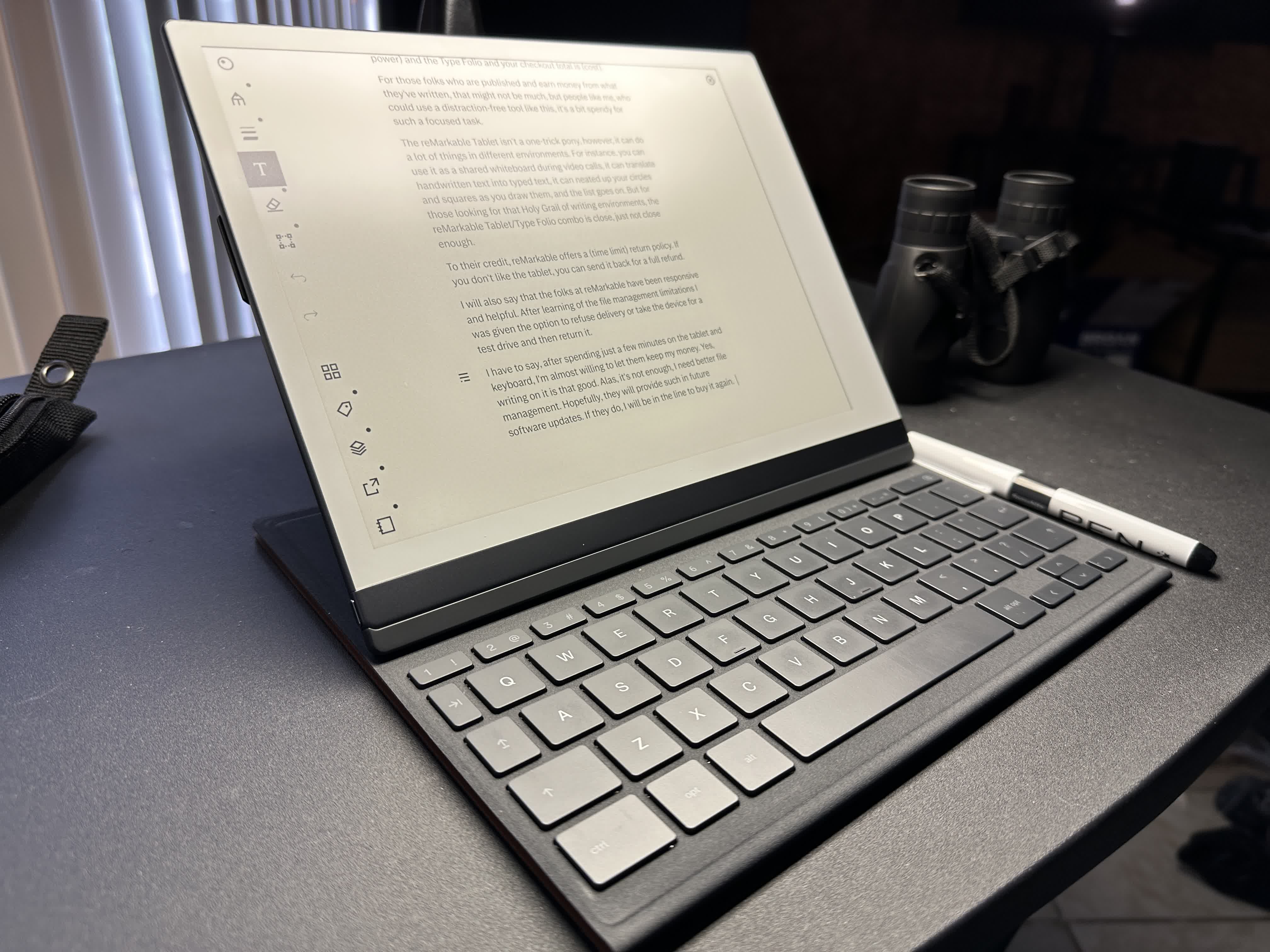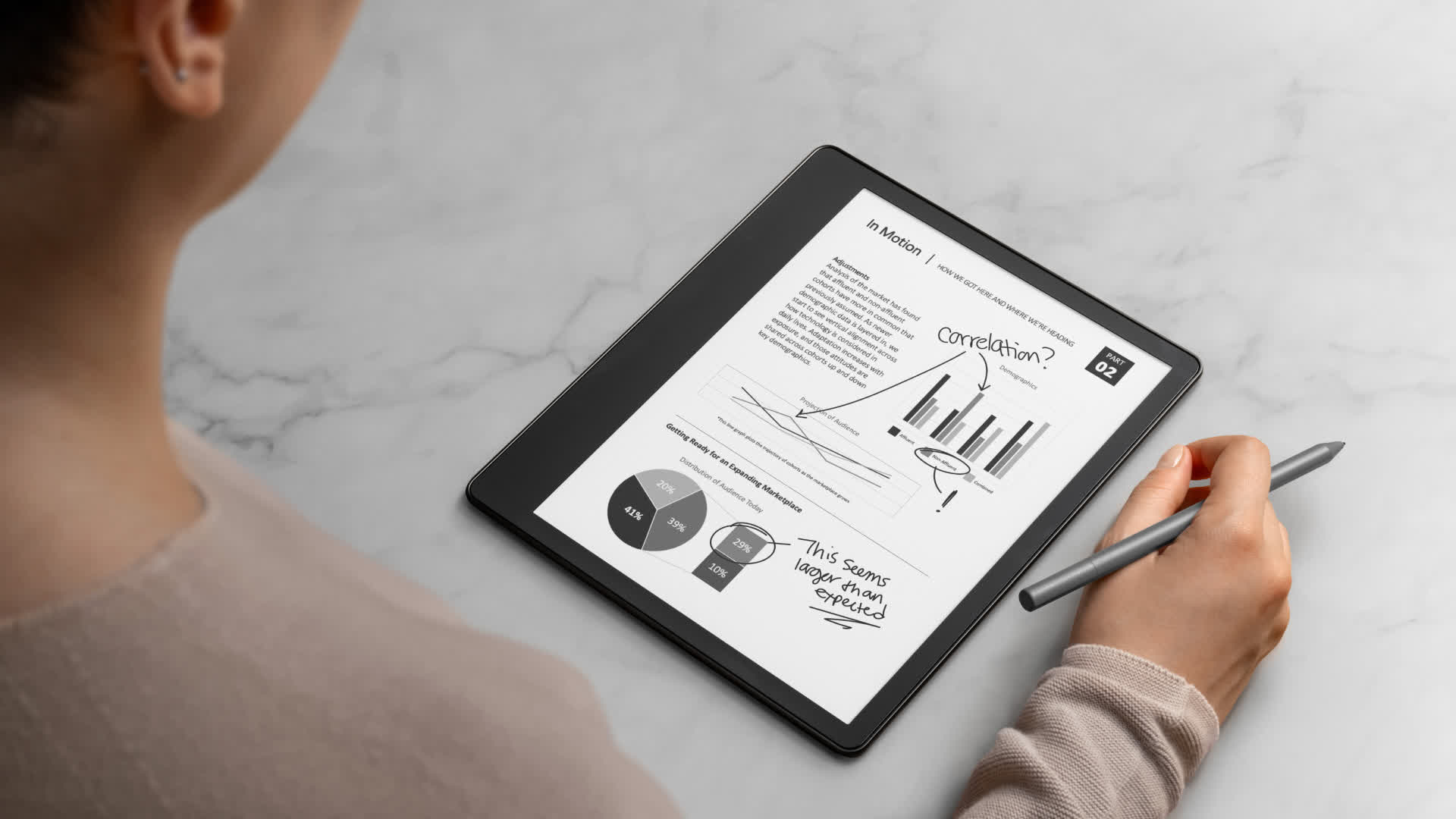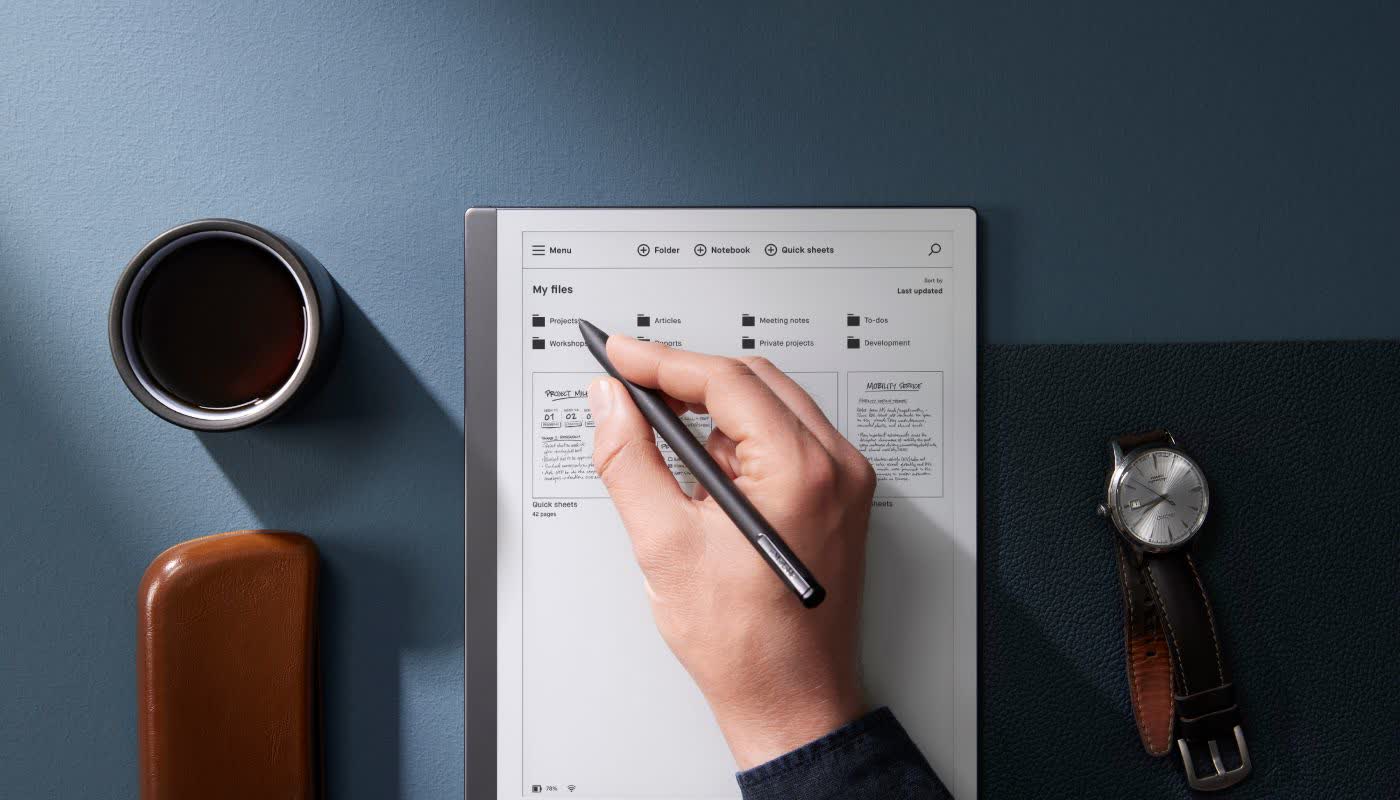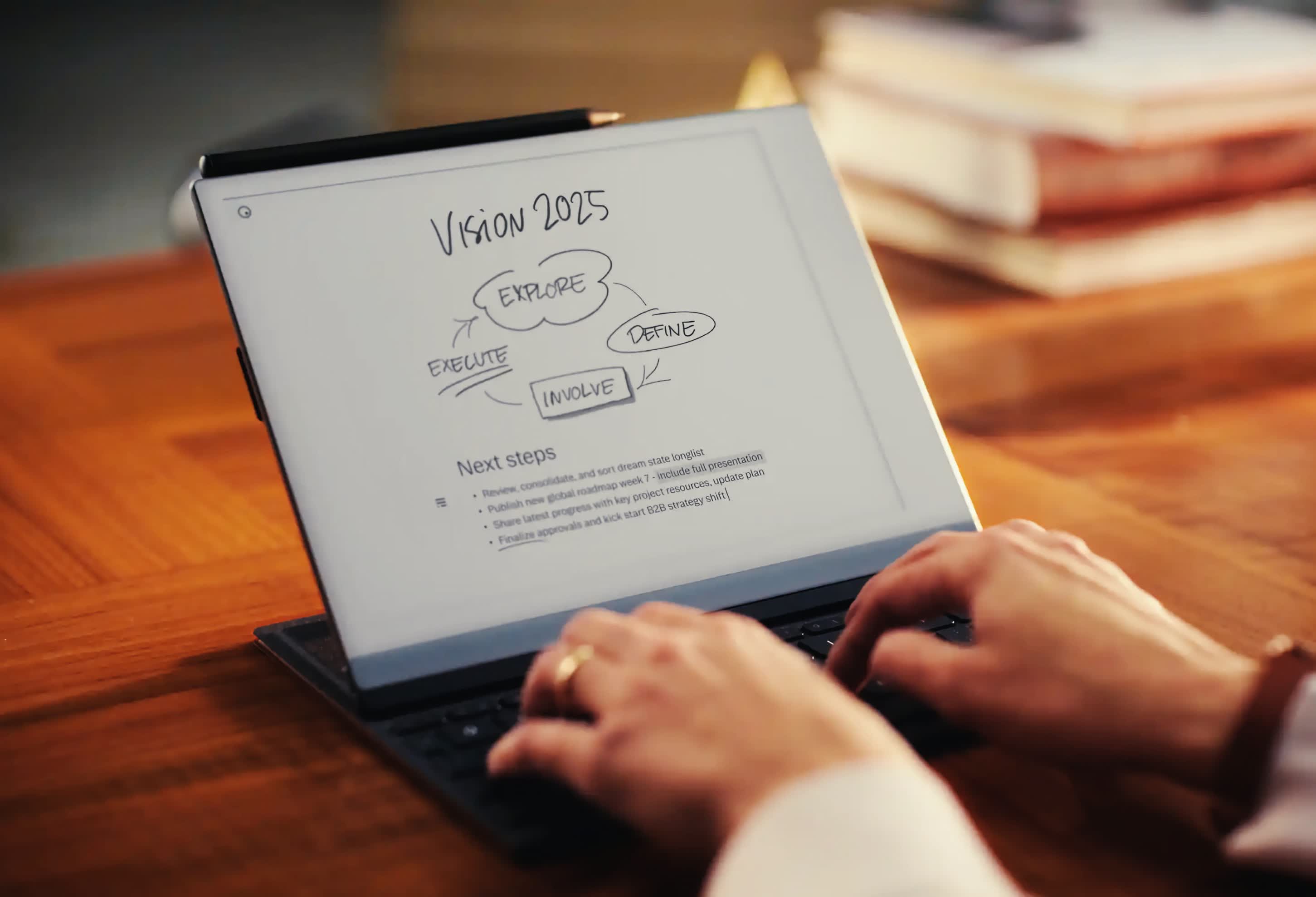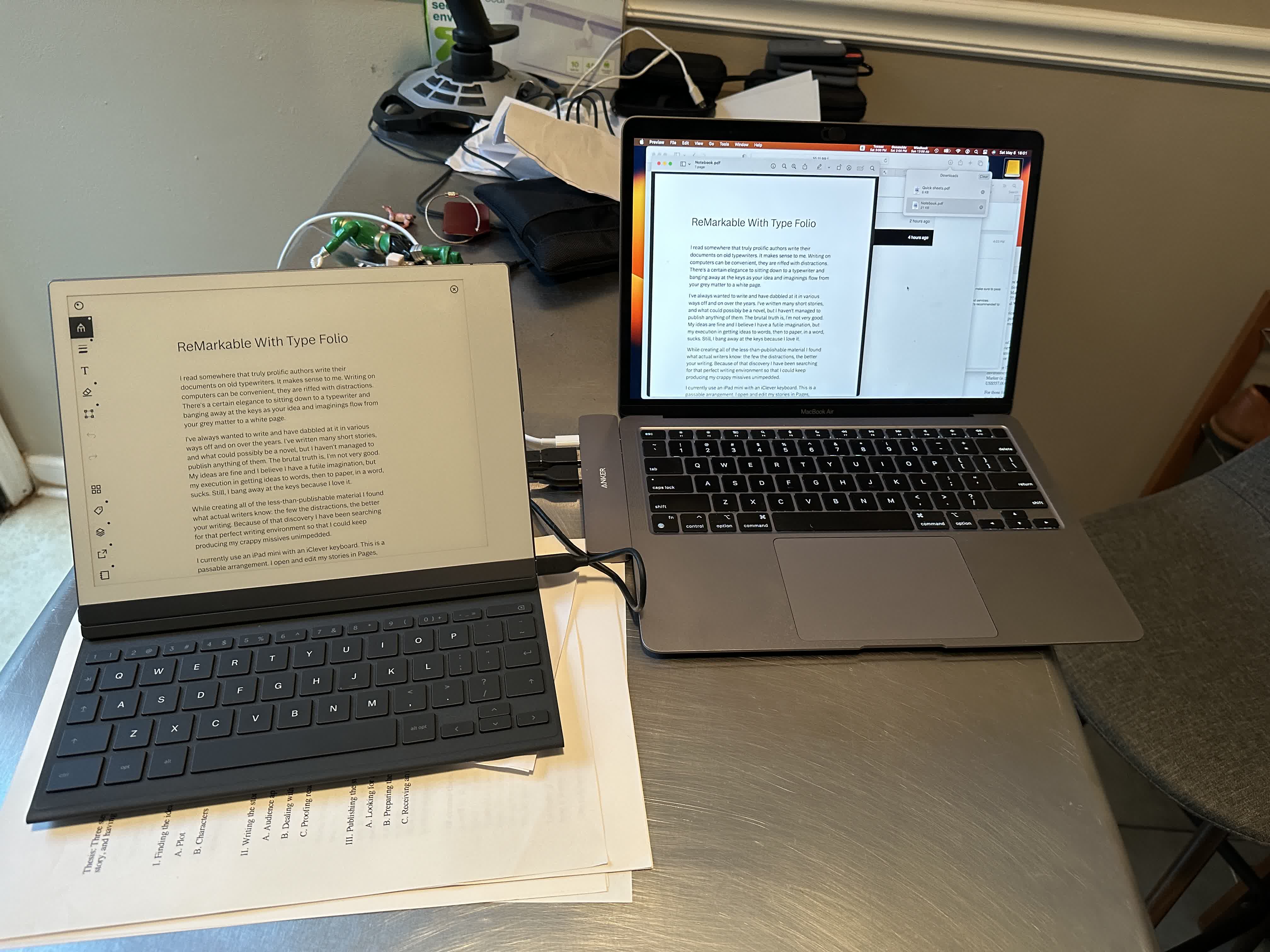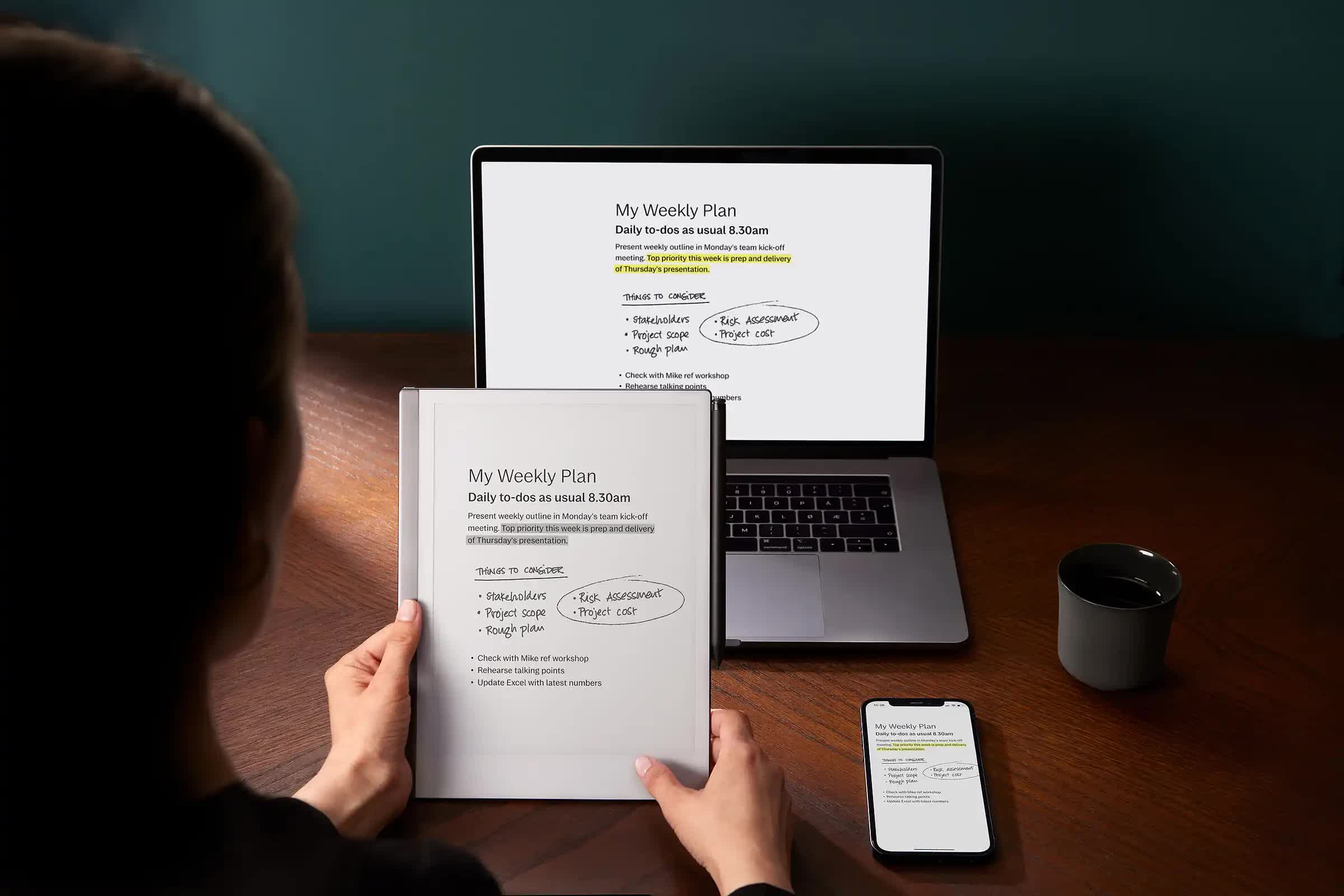I read somewhere that truly prolific authors write their documents on old typewriters. That makes sense to me. Writing on computers can be convenient, but they are riffed with distractions. There's a certain elegance to sitting down to a typewriter and banging away at the keys as your ideas and imaginings flow from grey matter to a white page.
I've always wanted to write and have dabbled at it in various ways off and on over the years. I've written many short stories and what could possibly be a novel, but I haven't managed to publish any of them. The brutal truth is, I'm not very good. My ideas are fine and I believe I have a fertile imagination, but my execution in getting ideas into words, then to paper, in a word, sucks. Still, I bang away at the keys because I love it.
While creating all of that less-than-publishable material I found out what actual writers know: the fewer the distractions, the better your writing. Because of that discovery I have been searching for that perfect writing environment so that I can keep producing my crappy missives undistracted.
I currently use an iPad mini with an iClever keyboard. This is a passable arrangement. I open and edit my stories in Pages, Apple's MS Word alike app, and I turn off anything that might distract me. I'll admit that this setup actually works well for me. It's very portable, files are easily transferable, and the iClever keyboard is surprisingly useable.
Even so, I still find that I can still get distracted because it's easy to just pull up email, messaging apps and other stuff that vie for my attention. What I think I need is a separate writing environment, one that is as portable as my iPad mini, but does not have any of the other attention grabbers. I need something like what real writers use, a typewriter, but portable.
That last requirement nixes any sort of old school typewriters. Underwoods and IBM Selectrics are not even luggable. There have been some interesting looking devices that make use of e-paper – if you have a Kindle then you have an e-ink / e-paper device. The FreeWrite Traveler, for instance, is certainly portable enough, but the small screen seems limiting and, from the reviews I've read, the e-paper screen isn't quite up to the challenge. I want something that approximates paper; a nice, big blank sheet, not some cramped little window.
It seems that technology is finally catching up to what I think is the ideal writing environment. Amazon, who makes the nearly ubiquitous Kindle PaperWhite, and a newer player called reMarkable, now offer devices that use the same e-paper technology many have come to enjoy. While Amazon's Kindle Scribe looks like a winner, it is the reMarkable 2 tablet with its new Type Folio that caught my attention recently.
reMarkable's Type Folio turns its tablet into exactly what I was looking for; a writing environment that provides the basic functions of a word editor, displaying what is written on an endless sheet of e-paper, all while keeping it all distraction free. When I saw the advertisement for the tablet and keyboard I immediately ordered one and it's where I'm typing this review on.
The Good Stuff
The reMarkable Tablet is an ultra thin, ultra lightweight device that, when laid flat, occupies about the same amount of desktop real estate as a 10" iPad. There is no backlighting. The screen looks like a blank sheet of off-white paper. That's a good thing, and I'll get to that in a bit.
While it weighs next to nothing (approximately 403.5 grams or 0.88 lbs) it still manages to feel like a well built piece of kit. There is a single button for toggling power, which the device sips sparingly. It's the e-paper that allows it to be so frugal with power, the reMarkable 2 will run about 2 weeks on a full charge.
As opposed to a typical laptop or tablet, which must continually refresh its screen, e-paper devices don't need to refresh nearly as often. Once an image is created on the screen, it stays, even when there's no power. The only drawback to this power saving strategy is that in order to draw something new, the entire screen has to be erased then redrawn. This can be a problem for images that require constant movement, but static and near-static images, like text and still photos, can work well.
The folks at reMarkable have even tweaked their e-paper to refresh a bit quicker than what you might see on a Kindle PaperWhite. The result is a screen that looks and feels like paper, but is smart enough, and fast enough to allow real time drawing and typing.
As I type out this review I am amazed at how quickly and easily the text appears on the screen. This is better than any typewriter I'm familiar with.
The Type Folio keys are well spaced and feel responsive, though they don't give you that satisfying bounce true mechanical keys do. Even so, for a portable writing environment, this is completely serviceable. I haven't made nearly as many mistakes typing as I tend to do on my iPad mini/iClever keyboard arrangement. That is a huge plus.
The Type Folio physically connects to the tablet using a powerful magnet, electronically via Bluetooth. Once attached the tablet stays puts and the folio can opened to present the keyboard and act as a stand for the tablet, thus producing a perfect portable writing environment.
The Not-So-Good Stuff
Being able to write without disruption is wonderful, but I also need to be able to save what I've written and to be able to edit it in other environment, like my MacBook. Here is where things get a bit dicey on the reMarkable.
While you're on the tablet, reMarkable gives you basic and very useable file and folder organization. You can take notes, both typed and handwritten, and save them locally or in the reMarkable Cloud service called Connect, which is free to use for a year, then it's $2.99 a month. You can also sync notes to other cloud services like Dropbox, Google Drive and Microsoft OneDrive. I'm also told that there is MS Office integration, but I didn't try it. Once in the cloud you can access your notes and modify them on other devices. This can be handy for writers on the go.
The problem comes in when you want to move a document you've created on the tablet to another device and not use cloud services. Wi-Fi is available in a lot of places, but it isn't as ubiquitous as one might believe. Without access to the cloud your options become more restricted. reMarkable lets you transfer documents to other devices via USB cable, but in this arrangement the documents are only exportable as PDF files.
This may seem like a minor inconvenience until you realize that dependence on the cloud can be a workflow logjam, particularly when Wi-Fi is not available. Because of this shortfall, I have to export this review to my MacBook as a PDF, open it in Preview, copy the text, then paste it in Pages in order to edit it. I can move what I've written on my MacBook back to the reMarkable tablet, but also only as a PDF. I can't add to it or rework it as we authors often need to do.
One other factor that might limit wide adoption of this otherwise great writing environment is cost. The reMarkable tablet costs $279 alone. Add to that the Marker (a pen that doesn't require power) and the Type Folio and your checkout total swells to $557 before shipping and applicable taxes.
For those folks who are published and earn money from what they've written, that might not be much, but people like me, who could use a distraction-free tool like this, it's a bit spendy for such a focused task.
---
The reMarkable tablet isn't a one-trick pony, however, it can do a lot of things in different environments. For instance, in your home office, you can use it as a shared whiteboard during video calls. It can translate handwritten text into typed text, it can neaten up your circles and squares as you draw them, and the list goes on. As a note taking or idea drafting device, the reMarkable 2 excels. But for those looking for that Holy Grail of a distraction free writing environments, the reMarkable 2 + Type Folio combo is close, just not close enough.
To their credit, reMarkable offers a 100-day return policy. If you don't like the tablet or keyboard you can send it back for a full refund.
I will also say that the folks at reMarkable have been responsive and helpful. After learning of the file management limitations I was given the option to refuse delivery or take the device for a test drive and then return it. I took the latter option.
I have to say, after spending just a few minutes on the tablet and keyboard, I'm almost willing to let them keep my money. Yes, writing on it is that good. Alas, it's not enough, I need better file management. Hopefully, they will provide such in future software updates. If they do, I will be in the line to buy it again.

